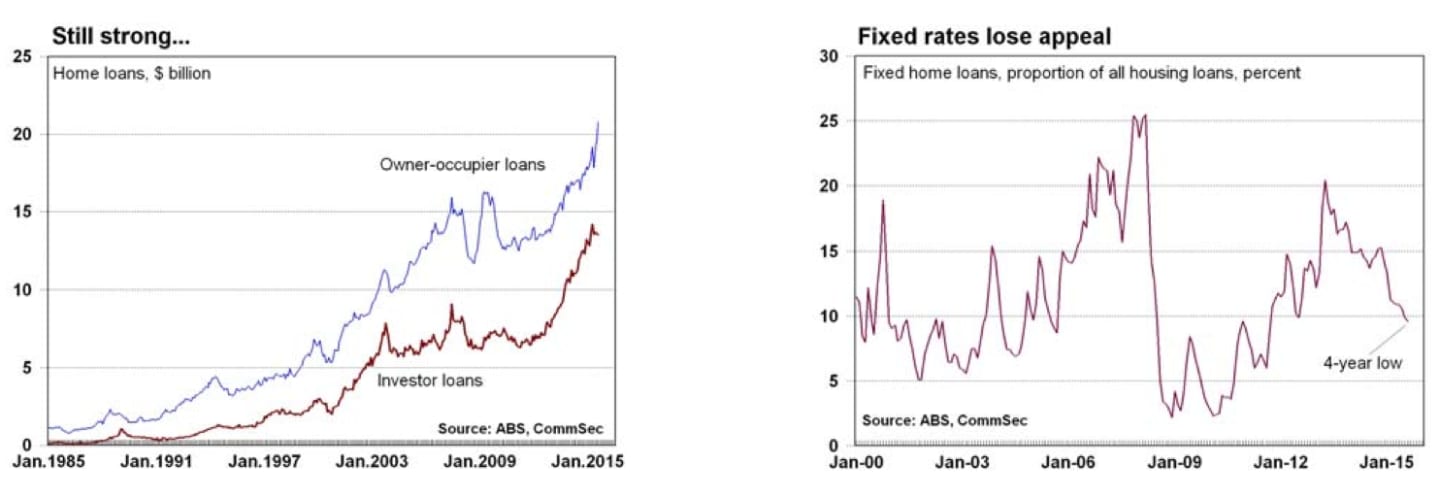Home loans growing at fastest rate in 12 years: CommSec's Savanth Sebastian
Policymakers would be encouraged by the lift in owner-occupied loans at the expense of investor finance. The value of investment loans has now fallen for three out of the past four months. Overall the housing finance statistics do not suggest a huge pullback in home landing, although there are signs that activity levels are starting to ease. Over the next few months the tighter bank lending standards will filter through to the housing statistics.
There is no doubt the pullback in investor loans is a positive, and will help to cool property prices but housing is all about demand and supply. Encouragingly loans to build new homes lifted after falling for the prior three months. If there is a substantial pullback in new construction it could be more of a detriment in the longer-term. The situation bears watching but at present the anticipated lift in supply over the coming year coupled with tighter lending standards should result in home prices easing and rents also falling.

What do the figures show?
Housing finance
The number of new owner-occupier housing loans (commitments) rose by 2.9% in August. Excluding the refinancing of dwellings, the number of loans was up by 5.2%.Loans by owner-occupiers for the construction of homes rose by 2.4% in August; loans to buy newly-erected dwellings rose by 2.6% and loans for the purchase of established dwellings (excluding refinancing) rose by 6.0%. The number of refinancing transactions fell by 1.5%.
Housing finance - value
The value of new housing commitments (owner occupier and investment) rose by 3.5% in August.
Owner-occupier loans rose by 6.1% while investment loans fell by 0.4%.
The value of loans by owner-occupiers and investors to build new homes rose by 2.8% in August after falling by 0.4% July. The value of loans to build stood at $2.6 billion, easing further from the record high of $2.9 billion in December 2014.
Housing finance – other statistics
The proportion of first-time buyers in the home loan market rose from 15.4% to 15.7%in August. (However the figures take into account refinancing loans and as such the figures may be skewed). Fixed rate loans fell from 9.9% to 9.6% of all loans in August – a four year low. And the average home loan across Australia stood at $371,200 in August, up 15.4% on a year ago – the fastest pace of growth in 12 years.
What is the importance of the economic data?
Housing Finance data is produced monthly by the Bureau of Statistics and shows commitments by lenders, such as banks, to provide finance for housing purposes. The lending figures relate to those looking to buy or build homes to live in as well as those seeking to buy or build homes for investment purposes. Generally people get their finance organised first, so the figures are regarded as a leading indicator on the housing market.
What are the implications for interest rates and investors?
The Reserve Bank will be keeping a close eye on the housing market. The hope would be that while housing plays an integral part in driving the broader growth story, other sectors step up to the plate given the attractive low interest rate environment. In particular policymakers would be hoping that the non-mining business sector looks to invest and create more employment over the coming year.
